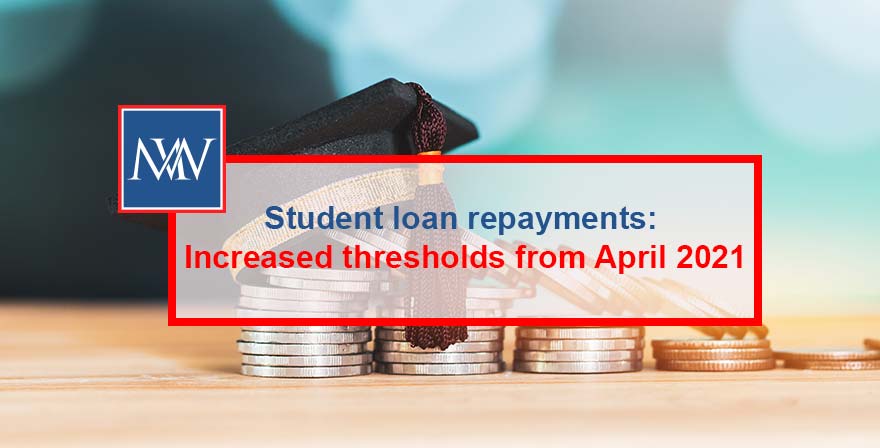LATEST BLOGS AND NEWS
Student loan repayments: Increased thresholds from April 2021

Repayment of student loans is a shared responsibility between the Student Loans Company (SLC) and HMRC. Employers have an obligation to deduct student loan repayments in certain circumstances and to account for such payments ‘in like manner as income tax payable under the Taxes Acts’.
There are two plan types for student loan repayments, which have different repayment thresholds. From April 2021, the thresholds are as follows:
Plan 1 loans are pre-September 2012 Income Contingent Student Loans and repayments will start when the £19,895 threshold is reached. Loans taken out post-September 2012 in England and Wales become eligible for repayment when the higher threshold of £27,295 is reached. Previously plan 2 loans have been repaid outside of the payroll directly to the SLC, but from April 2016 they are to be calculated and repaid via deduction from an employer’s payroll. This means that employers and payroll software must be capable of coping with both types of plans.
From 6 April 2021 HMRC are introducing a new plan type for Scottish Student Loans (SSL) known as Plan 4. The Plan 4 threshold will be £25,000. Student Loan deductions will continue to be calculated at 9% on earnings above the Plan 1, Plan 2 or Plan 4 threshold.
Post-graduate loans
Repayment of postgraduate loans (PGL) via PAYE commenced from April 2019. Broadly, if an individual has a PGL, HMRC will send their employer a Postgraduate start notice (PGL1) to ask them to start taking PGL deductions. Individuals may also be liable to repay a Student Loan Plan Type 1 or 2 concurrently with PGL. HMRC will let their employer know this by continuing to send the normal Student Loan start (SL1) and Student Loan stop (SL2) notices as well as PGL1s and PGL2s.
The Postgraduate Loan threshold will remain at its current level of £21,000 for 2021-22. Earnings above £21,000 will continue to be calculated at 6%.
Repayment
Broadly, an employer must start making student loan deductions from the next available payday using the correct plan type if any of the following apply:
Employers are not responsible for handling employees’ student loan queries – the employee must contact SLC for this.
Student loan deductions are made from gross pay, alongside tax and NIC.
Deductions are rounded down to the nearest pound. Deductions are non-cumulative, and so employers can ignore the question of amounts already deducted by a former employer. HMRC provide tables to assist employers in calculating the deduction each pay day, which (because of rounding) may not be exactly 1/52 of the annual amount.
If an employee has two jobs, the employer does not need to be concerned with the employee’s other income, but should calculate the deduction based only on amounts paid by him. However, if the employee has two employments with the same employer, these should be aggregated for student loan purposes if they are aggregated for NIC purposes.
Employers are required to collect student loan repayments through the PAYE system by making deductions of 9% from an employee’s pay to the extent that earnings exceed the relevant threshold for each plan type, each year (see above).
Each pay day is looked at separately, and so repayments may vary according to how much the employee has been paid in that week or month. If income falls below the starting limit for that week/month, the employer should not make a deduction.
Taxpayers who make repayments through PAYE can swap to repaying by direct debit in the last 23 months of their loan if they so wish. SLC will normally contact individuals shortly before this time to offer this option. This payment method enables account holders to choose a suitable monthly repayment date and ensures that they do not repay too much.
If an employee makes additional student loan repayments direct to SLC, they will have no effect on the size of the repayments made through the payroll – the employer will continue to deduct 9% of earnings above the threshold. The employee will, of course, pay off the loan more quickly.







